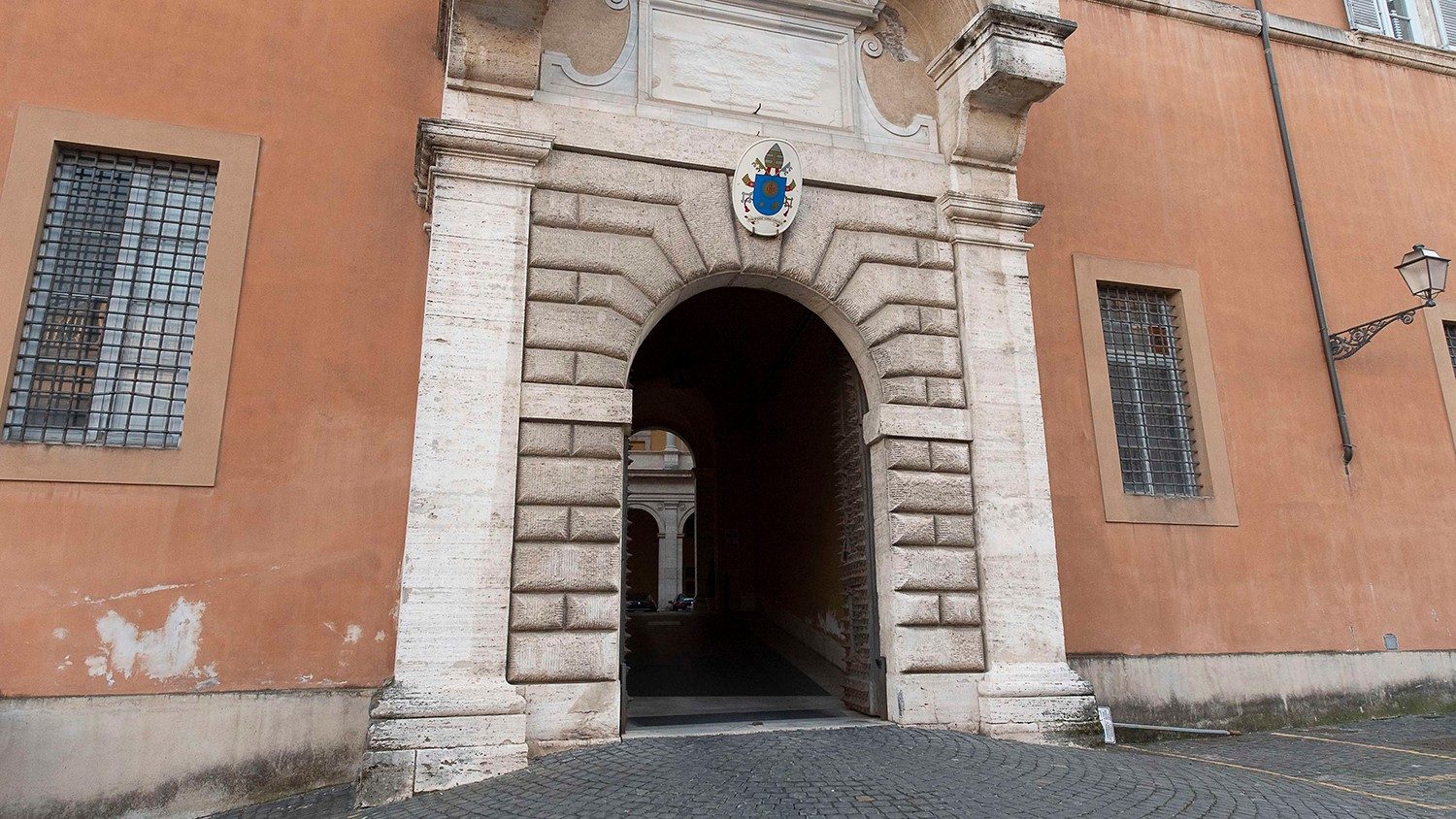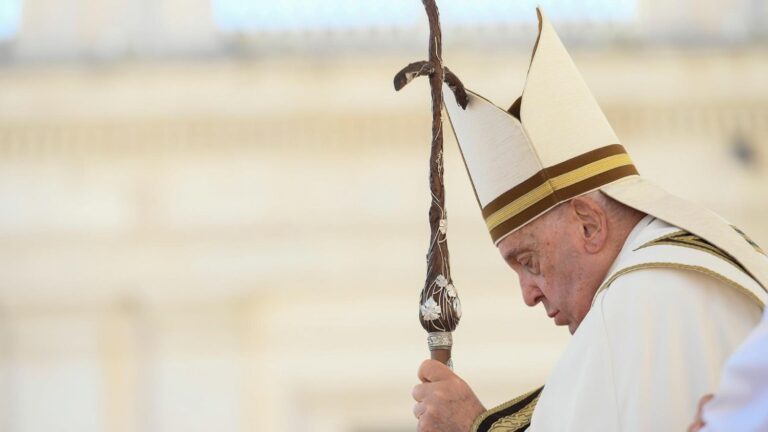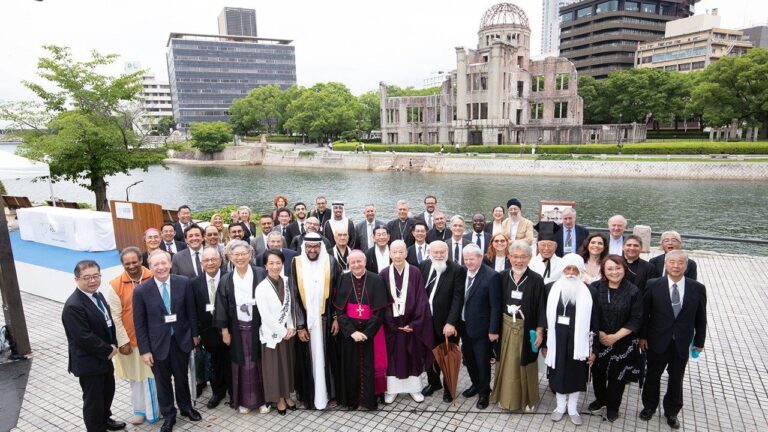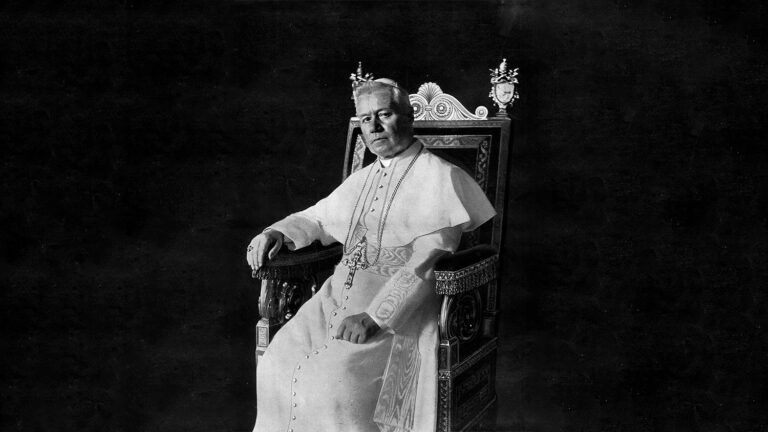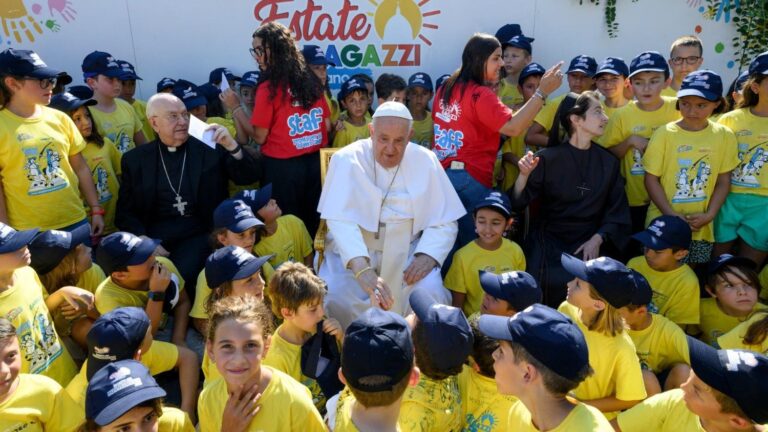Dicastery for the Doctrine of the Faith recognizes ‘Trinity Fount of Mercy’ messages
The Prefect of the Dicastery for the Doctrine of the Faith sends a letter, approved by the Pope, to the Cardinal Bishop of Como granting the “nulla osta” regarding the spiritual experiences at the Shrine of Maccio.
Vatican News
The entry into force of the new Norms for the discernment of supposedly supernatural phenomena has allowed a new “green light” from the Dicastery for the Doctrine of the Faith, this time concerning the spiritual experiences at the Shrine of Maccio in Villa Guardia, near Como, in northern Italy.
In 2000, Gioacchino Genovese, a music teacher and choir director, married and father of two daughters, began to perceive, through “intellectual visions”, a “living presence of the mystery of the Holy Trinity”. A serious, discreet man, who never seeks to put himself forward, five years later he invites more people to engage in adoration, supplications and novenas.
After an initial examination of Genovese’s writings and of the phenomenon more generally, in 2010 the then Bishop of Como, Diego Coletti, gave the parish church the status of a sanctuary with the title Santissima Trinità Misericorida (“Most Holy Trinity Mercy”).
The prefect’s letter
Today, Wednesday July 24, a letter The letter addressed to Cardinal Oscar Cantoni, Bishop of Como, by the Prefect of the Dicastery for the Doctrine of the Faith, Cardinal Victor Manuel Fernández, has been made public.
Cardinal Cantoni had written to the dicastery regarding the possibility of declaring the “nulla osta” for the phenomenon of Maccio according to the provisions of the new Norms. In the letter, approved by Pope Francis, Fernández provides some clarifications on Genovese’s writings.
The positive elements
First of all, the Prefect of the DDF lists the positive aspects present in the messages: “The Trinity is the source of mercy and its perfect realization (italics in original). In the light of this conviction, what the spiritual writings and the Magisterium have repeatedly affirmed about the mercy of God or of Christ acquires a strong Trinitarian meaning. The marginalization of the Trinitarian mystery in theological reflection and in the spirituality of past centuries is well known. In this sense, Mr. Genovese’s spiritual experience is part of the rediscovery of the centrality of the Most Holy Trinity for the faith and Christian life that has taken place in the last century.
“In the writings of Mr. Genovese, this truth is expressed with insistence and the message of Mercy that springs from the Trinitarian We is full of beauty. In the Son of God made man, from his Incarnation until today, the infinite love of the Trinitarian Communion for us is manifested:
“In Me, the Word incarnate, O my Spouse, you see and touch the Love, Charity and Mercy of Me, the one God, and you contemplate, without understanding, except in Me the Word, O my Spouse, the Gift of Us Trinity” (864).
Other excerpts from the messages are also included in the letter, including the following, such as this one:
“My Incarnation is a gift of Trinitarian Mercy!
My Word is a gift of Trinitarian Mercy!
My Passion is the Gift of Trinitarian Mercy!
My Resurrection is the gift of Trinitarian Mercy!
I am Mercy! (49).
Trinitarian Prayer
Cardinal Fernandez emphasizes: “Even if only the Son assumed human nature, the Church is called to rediscover ever more in the gestures of Christ that infinite mercy of the Trinitarian God, which in the writings of Archbishop Genovese is called by the name of ‘Trinitarian Mercy’. This is the center of all the messages because, ultimately, it is the center of Revelation.”
In his letter, the cardinal prefect also reproduces the following “beautiful” prayer:
“It is You who look at me, who look at me, who draw me to You and, taking my lowered face, you raise it towards yours and you tell me to fix you in the Heart, in your Heart, there where the Love that you have for me beats, so that I can plunge my ear into that eternal beat and be able to rest my head in peace. And again, raise my Face so that I fix your Face. In You, man Jesus, who are God, the very Face of the Trinity Mercy, so that, looking into your eyes, I can truly trust in You, my Lord and my God. Thus, although I am a sinner, I can, in You, raise and fix my Gaze without fear. To the Mercy, to the infinite Love of You, my one God, impenetrable Trinity of the infinite Mystery of Love in You, that You are! I love you and in you I feel renewed and purified from the heavy filth of sin” (1331).
Aspects to be clarified
Cardinal Fernández’s letter also addresses aspects that need to be clarified. The cardinal notes: “It is certainly never easy to express oneself precisely on the mystery of the Most Holy Trinity; and if this applies to the great theologians and to the Magisterium of the Church itself, it becomes even more complex when one tries to express with human words what is lived in a spiritual experience. Mr. Genovese clearly recognizes this when, referring to his words, he says that he is “aware of their imprecision, just as everything I have written so far has been imprecise” (emphasis in original).
More specifically, the letter highlights as “the most complex issue” the expressions that use the Trinitarian plural “We” even to refer to the incarnation, such as “We Mercy (…) we are incarnate” (541).Such expressions are not acceptable.“, says Cardinal Fernandez, “and their dissemination must be avoidedbecause they can easily be interpreted in a way contrary to the Catholic faith” (italics in the original), since only the Son became incarnate.
“This does not mean, however, that errors can be attributed to all of Mr. Genovese’s writings. In fact, in many of them, and especially in the following ones, we find clarifications that lead us to the correct interpretation,” the letter continues.
Cardinal Fernandez cites several other texts as examples, including the following: “In the Incarnation, the Trinity did not assume humanity, but in the Humanity of the Word we contemplate and touch also His Divinity (1407).”
“It remains clear,” explains the Prefect, “that, on the one hand, only the Word was incarnated and that all the texts which include a Trinitarian “We” refer to the common and constant presence of the three Persons, and on the other hand that, even if it is only the Word who is incarnated, the three Persons manifest themselves as Mercy in the Mystery of Christ,” he explains.
The correct interpretation
“We can maintain,” writes Cardinal Fernandez, “that the spiritual proposition that arises from the experiences recounted by Mr. Gioacchino Genovese about the ‘Merciful Trinity’, if interpreted in the light of what has been said (italics in the original), as the various experts consulted have maintained, does not contain theological or moral elements contrary to the doctrine of the Church. In any case, it is necessary to proceed in such a way that, in the publication of an anthology of writings, texts containing expressions that could lead to confusion (…) are avoided and that this letter is placed as an introduction to the collection.”
Finally, the letter specifies that “various texts referring to the devil must be interpreted as the expression of a God who never forgets his beloved creature, even when this created being has freely and definitively distanced himself from God”; and that “the texts which offer indications “The information given to the bishop or to other persons (details of dates, times, places and other detailed or minute details) is not useful to the faithful and cannot even be considered as divine indications for some, without careful discernment of the persons concerned.”
And it is added that other texts, containing “precise indications to the bishop or to other persons (details on dates, times, places and other circumstantial or minute details) are of no use to the other faithful and cannot even be considered divine indications for some, without careful discernment of the persons concerned.”
The letter also specifies that “the diocesan bishop is in dialogue with this dicastery”
The Bishop’s Decree
The value of the messages received by Genovese, with their symbolic language, consists in trying to overcome an excessive separation between Christology and Trinitarian theology, calling for a rediscovery of the “Trinity Mercy” reflected in every gesture of Jesus.
At the same time as the publication of the letter of the Dicastery, the Bishop of Como published the decree establishing the “nulla osta” according to the provisions of the new Norms.
